Living next to Lake Ontario has bonuses aside from breezes and views. Migration seasons bring a spectacular array of birds and, in late summer/early fall, Monarch butterflies! These beauties accumulate along the edge of the lake, fuelling up and waiting for favourable winds to help them across the huge expanse of water. When they are ready, they take flight for Mexico, where they will spend the winter. While it’s known that many Monarchs will funnel down and amass in Point Pelee Park, Canada’s most southern piece of land that is not an island, they may also be seen in many other places along the lake. A friend made trips to Amherst Island, a few hours north of Toronto, and saw thousands roosting in trees. Here in Scarborough, I am lucky to live next to the Guild Inn Park, where many hundreds could be seen at a time, feeding in the garden during the day, then roosting in the trees at night. Some years are better than others for seeing this annual spectacle, as it depends on the weather and butterfly populations, which have been on the decrease these past few decades. This was an amazing year.
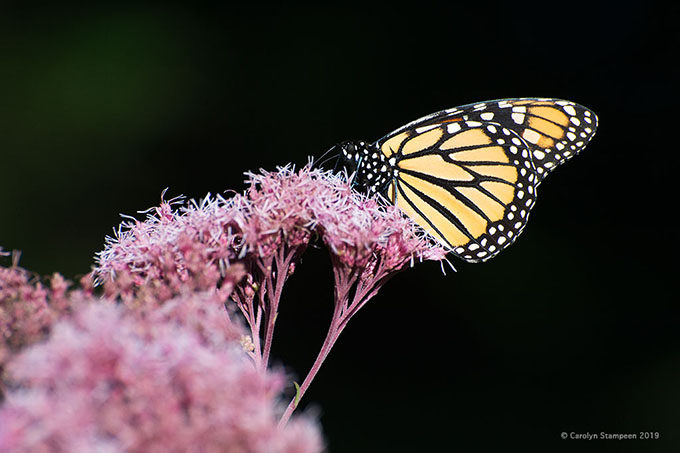
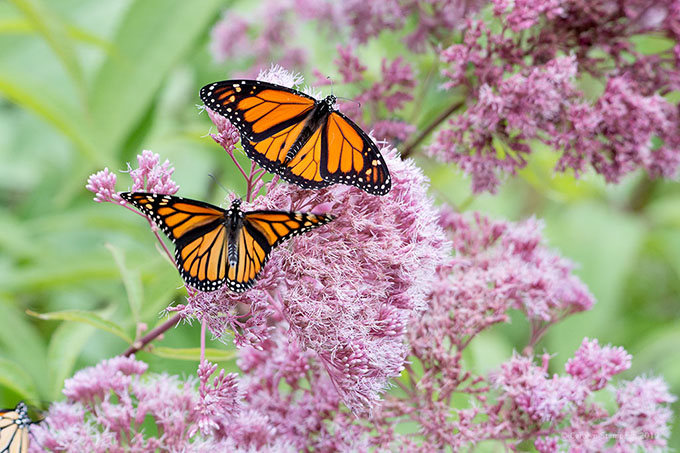
I couldn’t help but notice that there seemed to be a lot more male than female Monarchs. I later found out that this is not uncommon in the migrating population, and may becoming more pronounced. In the above image, both male and female are seen. The male is on top, and the most easily identifiable feature is the spot on the vein next to the abdomen, in the hindwing. Females don’t have those. As well, the veins in the female’s wings are much wider than those seen in the male.
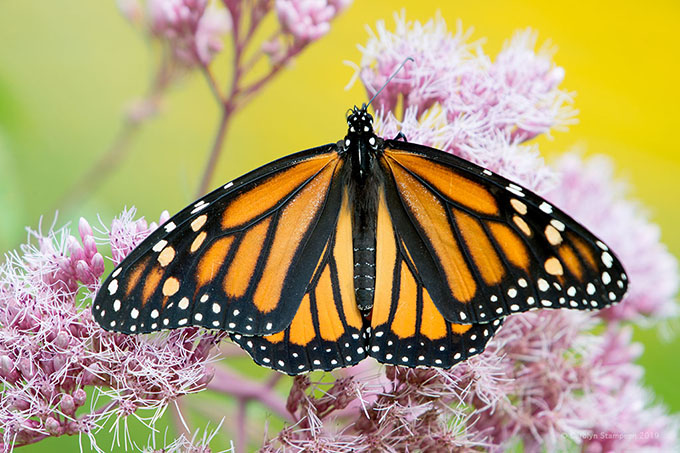
A closer look at the female, above, and the male, below.
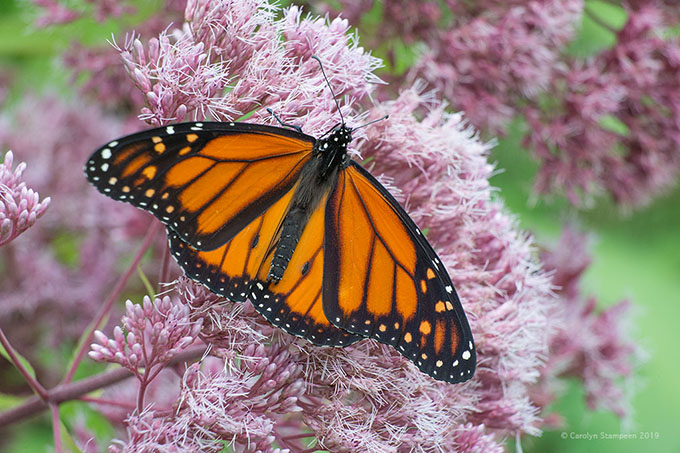
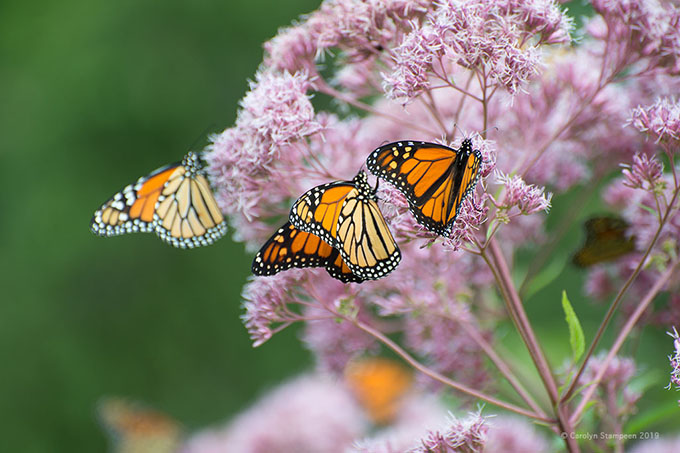
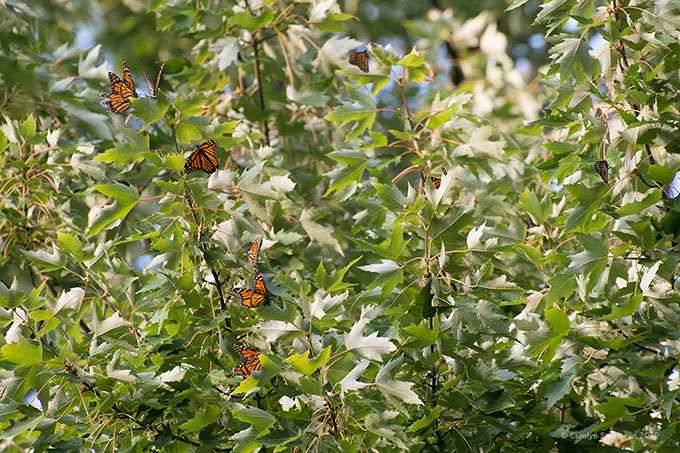
Monarchs roost in trees at night. In this park, I saw them beginning their roosting in two trees that were side by side. One was a maple tree; the other, a fir.
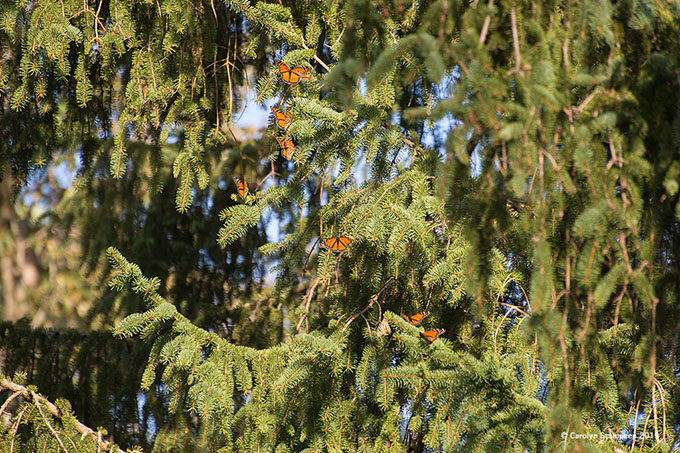
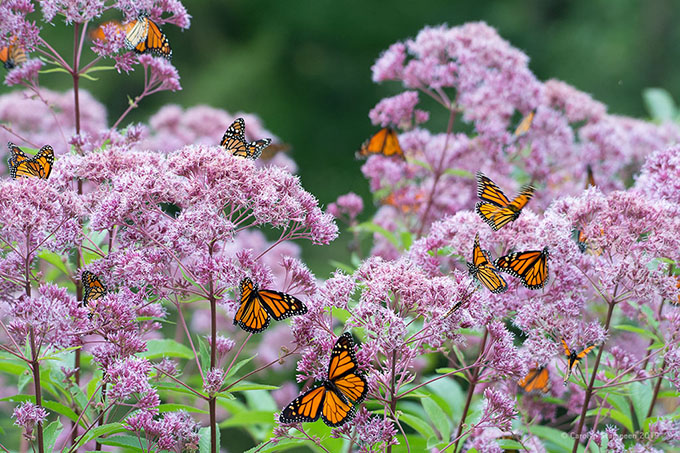
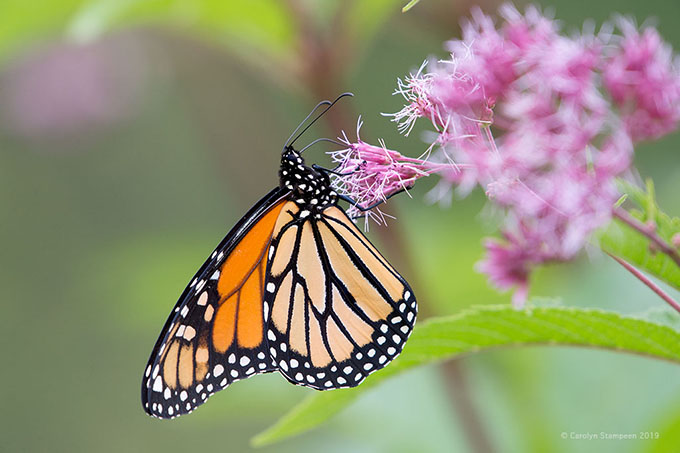
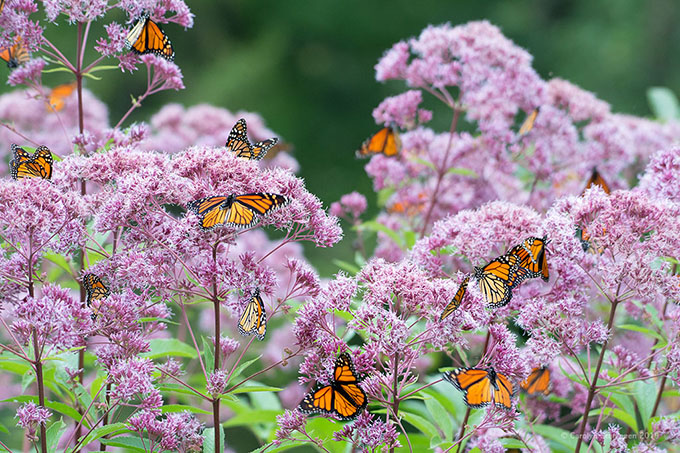
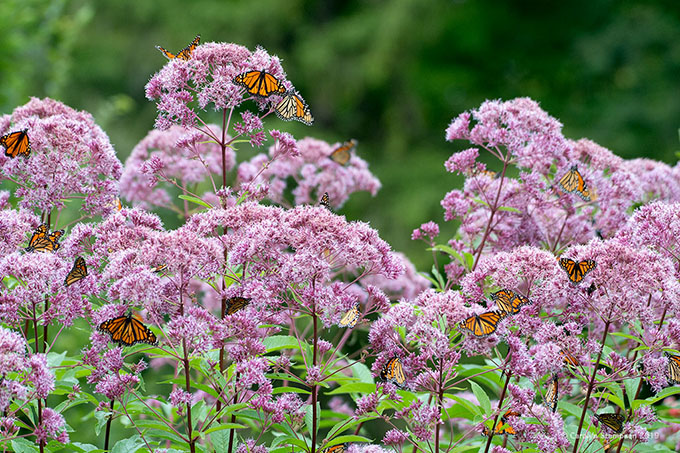
So many butterflies, so much beauty. It was an amazing Monarch migration year.
Additional information about this natural wonder may be found here:
Wiki page on the Monarch butterfly migration
Wonderful photos, Carolyn! Thanks for sharing. Do you happen to know what the pink-flowered plant is that the butterflies are feeding on?
Thanks!
No, I need to find out, though. It’s a formal garden, but they don’t have markers to identify the plants. This garden used to have a lot more flowers that were attractive to butterflies, including milkweed, but management changed. Still a variety of flowers, but this plant definitely seemed to be the biggest interest to not only Monarchs, but other species. I saw one Monarch on a cone flower, but the rest of the hundreds that were there for the week I was visiting daily were all one these. Very tall plant, taller than me.
Spotted Joe pye weed! Thanks for making me start looking again. I included tall in my search this time. 🙂